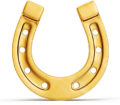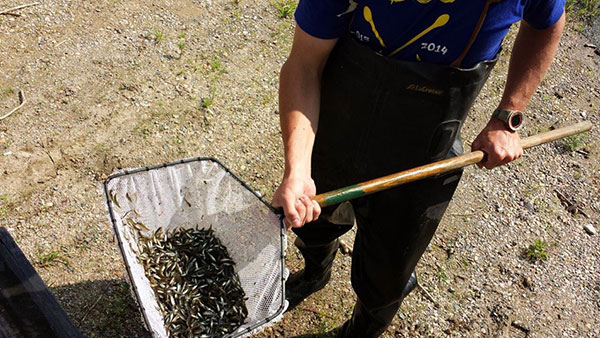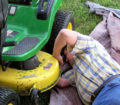By John Hackett
The Savage Arms Company was built on the back of the iconic 1899 lever action rifle. The action on the 1899 was substantially stronger than the lever guns built by Marlin & Winchester at this time. It was the 1899 that sprung us into the modern world of “high velocity” cartridges. Well, this is a story for another time…….. Right now, I want to focus on another major small arms advancement the Savage company was involved in; auto loading pistols.
Savage was never known for pistols, but in 1905 Savage submitted an auto loading pistol for the U.S. Army trials. The pistol played a very close “2nd fiddle” to arguably the best auto loading pistol ever made, the Colt 1911. The Colt was chosen because the Savage was the first one to fail after thousands of rounds were fired. The trial pistols were chambered in .45 auto, with an estimate of only 300 made. After the military trials ended in 1911, Savage is rumored to have bought back about 180 of the .45 auto chambered pistols & sold them to the general public.
Savage designated the pistol the Model 1907 for the year it was introduced into the civilian market. The first 1907’s were chambered in .32 auto. Some variations of the 1907 are found marked 7.65mm, which is the European designation for the .32 auto. A few 1907’s were chambered in .380 auto or 9mm (Kurtz); these are the same cartridge. A very rare version in .25 auto is also rumored to exist.
Several physical versions of the 1907 were produced. All had a round shaped, exposed “hammer”; but what appears to be a “hammer” is in fact just a cocking piece. The pistol is more of a “striker” fired design.
The advertising slogan at the time was “Ten shots quick!” and the pistol became very popular because, despite its small size, it had a 10-round double-stack magazine. Early advertising also boasted celebrity owners including William “Buffalo Bill” Cody, Bat Masterson, and the Pinkerton Agency. Savage Arms also presented Teddy Roosevelt with a Model 1907.
Around 40,000 .32 auto 1907’s were made between late 1914 and 1917 for the French military. These pistols are recognized by the presence of a loaded chamber indicator and a lanyard ring. Another 1,150 pistols in the same configuration were purchased by Portugal. The grip on these pistols had the insignia of Portugal on them.
A second Model 1915 was made for only two years (1915-16) and did not have the exposed cocking piece. The same .32 or .380 chambering were offered.
The most widespread version of the Savage auto pistol was the Model 1917. Its cocking piece was shaped more like a traditional “spur type hammer”. The 1917 also had a redesigned grip that had more of a “slope” to it. It too was chambered in .32 auto (7.65 mm) or .380 auto (9mm Kurtz). Production of the 1917 ended in 1928 with around 30,000 pistols made.
Values of Savage pocket autos vary quite a bit. Condition seems to be more important than the model. The .380 chamberings bring a bit more just due to the availability of the ammo. But average condition pistols generally bring in the $300 to $400 range. Specimens in mint condition, with the box, will usually bring over $1,000.
The value of the .45 auto or .25 auto versions is next to impossible to determine. Gun values are generally based on what previous specimens have sold for. In my more than half a century on this planet, I have never seen or heard of either of these two caliber Savage pocket pistols even witnessed, let alone change hands.
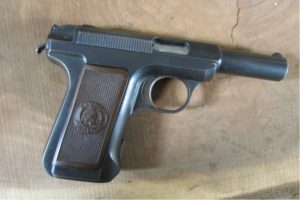
The 1917 was the most produced of the Savage auto loading pistols.
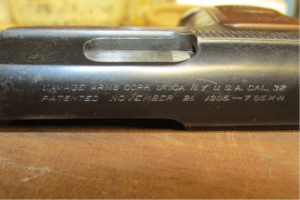
The .32 auto was the most popular chambering. Notice this one is also marked with the European 7.65mm designation.
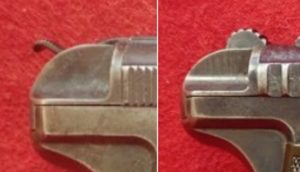
The easiest way to identify which model Savage pistol you have is by the cocking piece. The spur type on the left was used on the 1917; the rounded one on the right was used on the 1907; & the model 1915 was void of a cocking piece.
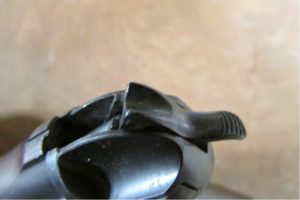
What looks like a hammer is really just a cocking piece. Here you can see the “bar” it is connected to; which is a striker.

